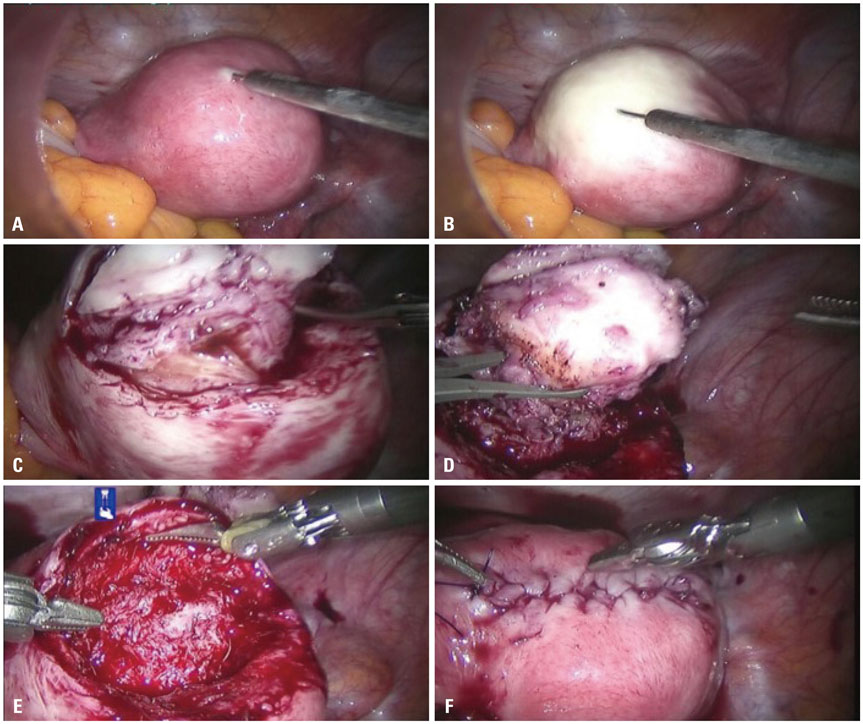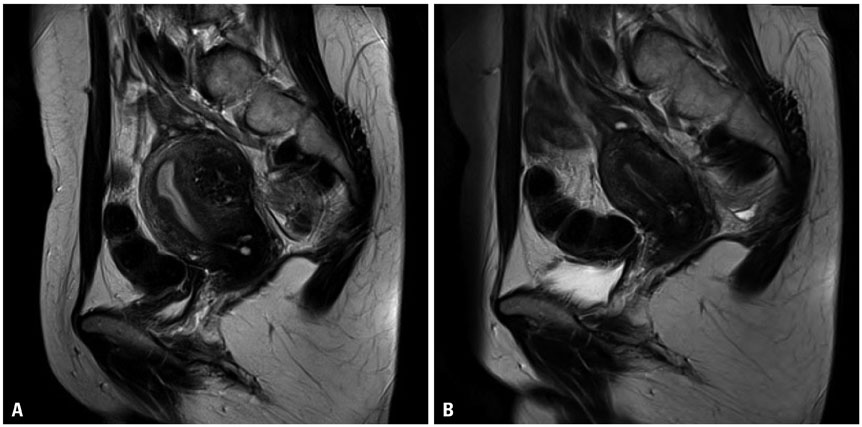Yonsei Med J.
2016 Nov;57(6):1531-1534. 10.3349/ymj.2016.57.6.1531.
Robot-Assisted Laparoscopic Adenomyomectomy for Patients Who Want to Preserve Fertility
- Affiliations
-
- 1Department of Obstetrics and Gynecology, College of Medicine, The Catholic University of Korea, Seoul, Korea. mrkim@catholic.ac.kr
- KMID: 2427177
- DOI: http://doi.org/10.3349/ymj.2016.57.6.1531
Abstract
- An adenomyomectomy is a conservative-surgical option for preserving fertility. Conventional laparoscopic adenomyomectomies present difficulties in adenomyoma removal and suturing of the remaining myometrium. Robot-assisted laparoscopic surgery could overcome the limitations of conventional laparoscopic surgery. Four patients with severe secondary dysmenorrhea and pelvic pain visited Seoul St. Mary's Hospital and were diagnosed with adenomyosis by pelvic ultrasonography and pelvic magnetic resonance imaging (MRI). The four patients were unmarried, nulliparous women, who desired a fertility-preserving treatment. We performed robot-assisted laparoscopic adenomyomectomies. The dysmenorrhea and pelvic pain of the patients nearly disappeared after surgery. No residual adenomyosis was observed on the follow-up pelvic MRI. A robot-assisted laparoscopic adenomyomectomy was feasible, and could be a minimally invasive surgical option for fertility-sparing treatment in patients with adenomyosis.
Keyword
MeSH Terms
Figure
Reference
-
1. Levy G, Dehaene A, Laurent N, Lernout M, Collinet P, Lucot JP, et al. An update on adenomyosis. Diagn Interv Imaging. 2013; 94:3–25.
Article2. Pepas L, Deguara C, Davis C. Update on the surgical management of adenomyosis. Curr Opin Obstet Gynecol. 2012; 24:259–264.
Article3. Hirata T, Izumi G, Takamura M, Saito A, Nakazawa A, Harada M, et al. Efficacy of dienogest in the treatment of symptomatic adenomyosis: a pilot study. Gynecol Endocrinol. 2014; 30:726–729.
Article4. Garcia L, Isaacson K. Adenomyosis: review of the literature. J Minim Invasive Gynecol. 2011; 18:428–437.
Article5. Postoperative adhesion development after operative laparoscopy: evaluation at early second-look procedures. Operative Laparoscopy Study Group. Fertil Steril. 1991; 55:700–704.6. Luciano AA, Maier DB, Koch EI, Nulsen JC, Whitman GF. A comparative study of postoperative adhesions following laser surgery by laparoscopy versus laparotomy in the rabbit model. Obstet Gynecol. 1989; 74:220–224.7. Lundorff P, Hahlin M, Källfelt B, Thorburn J, Lindblom B. Adhesion formation after laparoscopic surgery in tubal pregnancy: a randomized trial versus laparotomy. Fertil Steril. 1991; 55:911–915.
Article
- Full Text Links
- Actions
-
Cited
- CITED
-
- Close
- Share
- Similar articles
-
- Efficient myometrial defect closure in a layer by layer fashion after robot-assisted laparoscopic adenomyomectomy: a novel technique
- Surgical outcomes for robot-assisted laparoscopic myomectomy compared with laparoscopic myomectomy
- Erratum: Robot-Assisted Laparoscopic Radical Prostatectomy
- Practical issues and research trends of oncofertility in gynecologic cancer
- Laparoscopic assisted adenomyomectomy using double flap method



